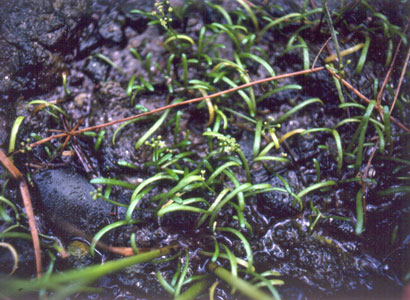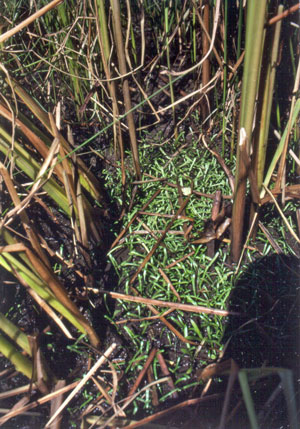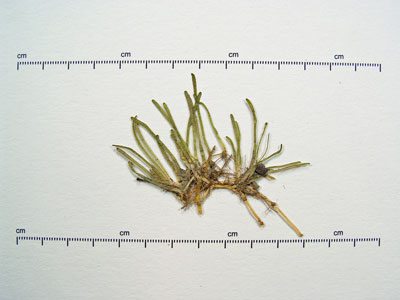DACF Home → Bureaus & Programs → Maine Natural Areas Program → Communities, Plants, and Animals → Rare Plants → Lilaeopsis chinensis

Lilaeopsis chinensis (L.) Kuntze.
Lilaeopsis
- State Rank: S2
- Global Rank: G5
- State Status: Special Concern
Habitat: In mud of brackish marshes and tidal shores along the coast. [Tidal wetland (non-forested, wetland)]

Range: Nova Scotia to Florida, west to Mississippi.
Aids to Identification: Lilaeopsis is a small, low plant of saline mudflats that may form extensive mats on the intertidal mud. The prostrate stem of the plant sends up leaves comprised of a modified petiole only (called phyllodia) which are tubular, 2-8 cm long, rounded at the tips, and jointed by horizontal partitions. Like other members of its family (Queen Anne's lace, for example) the flowers are borne in umbels. The umbels rise slightly above the phyllodia and bear small white flowers, about 5 mm across, with 5 petals.
Ecological characteristics: Ecological relationships in Maine are not well known.
Phenology: Flowers June - August.
Family: Apiaceae
Synonyms: Lilaeopsis lineata (Michx.) Greene.

Known Distribution in Maine: This rare plant has been documented from a total of 10 town(s) in the following county(ies): Sagadahoc, York.
Reason(s) for rarity: At or near its northern limit.
Conservation considerations: Prevent degradation of marsh and estuary habitat from adjacent land uses.